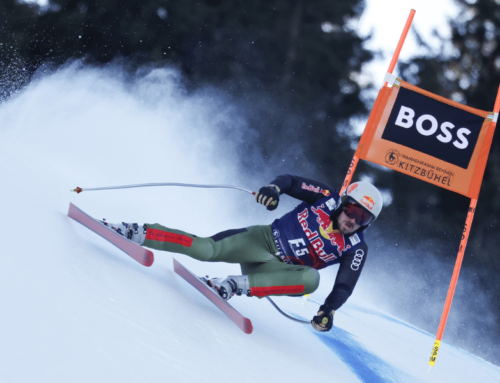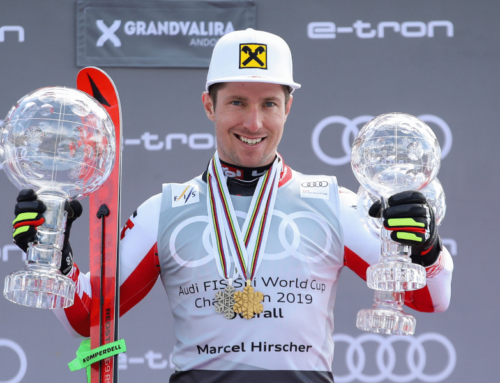Target 2010: U.S. women's jumpers step up the intensity
Target 2010: U.S. women’s jumpers step up the intensity{mosimage}PARK CITY, Utah — Having a chance to see women’s ski jumping included in the 2010 Olympics and be part of that pioneering move for their sport will spur them to re-dedicate themselves and extend their training and competitive drive, three women jumpers said Thursday.
The International Ski Federation approved the inclusion of women’s jumping in the 2009 World Nordic Ski Championships in Liberec, Czech Republic, a necessary step before gaining approval for the 2010 Games in Vancouver. Earlier this month, the U.S. Ski Team, for the first time, nominated five women to its ski jumping squad. The team will be formally named later this summer.
Meanwhile, Olympic organizers in Vancouver have indicated they were receptive to adding women’s jumping and, said U.S. Nordic Director Luke Bodensteiner, “We feel very positive about the IOC’s decision in October.”
Bodensteiner, women’s coach Casey Colby and three of the women jumpers — Jessica Jerome, Alissa Johnson and Abby Hughes — participated in a national teleconference to discuss women’s jumping. The highest level of women’s jumping is the Continental Cup, which will return to Utah with the opening events of the women’s 2007 season July 21-22 at Utah Olympic Park.
“For us, it’s definitely more of a drive,” Johnson said. “We’ve always been really dedicated athletes, but now there’s something behind really pushing us. We have even more of a desire and drive … [knowing] one day it will pay off” with the Olympic competition.
The three women took different routes to ski jumping:
Johnson, 19, whose father is a former U.S. jumping head coach and jump program director, started jumping with her younger brother, Anders — who became the youngest U.S. Olympic skier last winter when he qualified for the Torino Games at 16. She was 5 and he was 3 when they began at Utah Olympic Park, she said. Now, she’s a part-time student at the University of Utah when she’s not training. “Ski jumping is 110 percent of my time,” she said — or competing.
Jerome, 19, a full-time student at Westminster College in Salt Lake City who drives back to UOP during the afternoon to train in between her morning and evening classes, started when the National Sports Foundation in Park City sent a representative to her school to discuss jumping. She was a second-grader, but as her parents reluctantly agreed, “One day [of jumping each week] turned into six.” She is a former U.S. women’s multiple champion and has won on the international tour.
Hughes, who turned 17 this week and heads into her senior year at Park City High School in the fall, followed her brother Blake when he began jumping. He got her interested in jumping at 6 but she didn’t begin until a year later. “I wanted to do everything he did and I was still trying things he had tried … like ski racing,” she said.
Colby, a 1998 Olympic jumper who has coached the women for the past few years through the National Sports Foundation, said while the women are competitive, “It’s definitely a different world” from the men. The women’s goal, he said, is to help advance the sport and the competitive aspect even after the competition is finished.
“The ladies are a lot closer friends,” he said. Teams train together and share information so they can help further promote it. “Everybody’s trying to elevate it,” he said.
Being part of the U.S. Ski Team, he said, means the women will have greater support from the ski team’s staff, especially in sport science — nutrition, physiology, strength, physical testing and conditioning, among other elements. “The [technical, jump] training won’t change a great deal but there will be more education behind it with the testing,” he said.
The competitive level, which was limited to just a few skiers — including Jerome and teammate Lindsey Van — three or four years ago, grows every season, according to the coach. For example, he said, last season, Canada had wins by two skiers who haven’t turned 15; Katie Willis was 14 when she won and Atsuko Tanaka was just 13 when she won at UOP.
“The level of where the girls are skiing has definitely improved so much. Now, it’s a toss-up. People, over the last couple of years, have definitely stepped it up and we’ve shown people we’re capable of skiing at a high level,” Jerome said.
Bodensteiner, noting it was “obviously a proud and exciting time for us,” called it “a real milestone” to nominate the first women jumpers. He praised NSF as “one of the driving forces in the development of women’s ski jumping” but also pointed out there are clubs throughout the nation which are seeing young girls getting started in ski jumping.
He said the ski team is partnering with NSF, which is providing Colby to coach the women and Mike Keuler, another 1998 Olympian, to be the men’s coach. “We have our headquarters here [in Park City] and there are a lot of services we can bring to the athletes, and can bring the most to bear when the athletes live here … and all the women are from Park City,” he said.
“One thing we wanted, though, was to protect and help one of our best clubs, NSF. We didn’t want to just rush in and have an athlete grab and gut their program, so we plotted out a strategy to partner with them based on our desire to protect their grassroots program and to bolster what we can do at the top end,” he explained.
With approval of women’s jumping for the 2009 worlds, FIS also authorized extending junior eligibility until a skier is 20, a boost of two additional years. Jerome and Johnson, who each missed the 2006 Junior World Championships, laughed as they said, “We’re coming out of retirement” to compete this year.
Bodensteiner added that the U.S. Ski Team is looking for medals in women’s jumping at the junior worlds level — individually and in the team event. “These girls are already jumping at a level where they’re close to the best in the world, regardless of age and ranking … and we have our eyes set on medals at junior worlds.” Van, No. 2 among the women for the last few seasons, was bronze medalist (with Jerome fourth) when women’s jumping was a demonstration event at the 2004 Junior World Championships.
— USSA





















